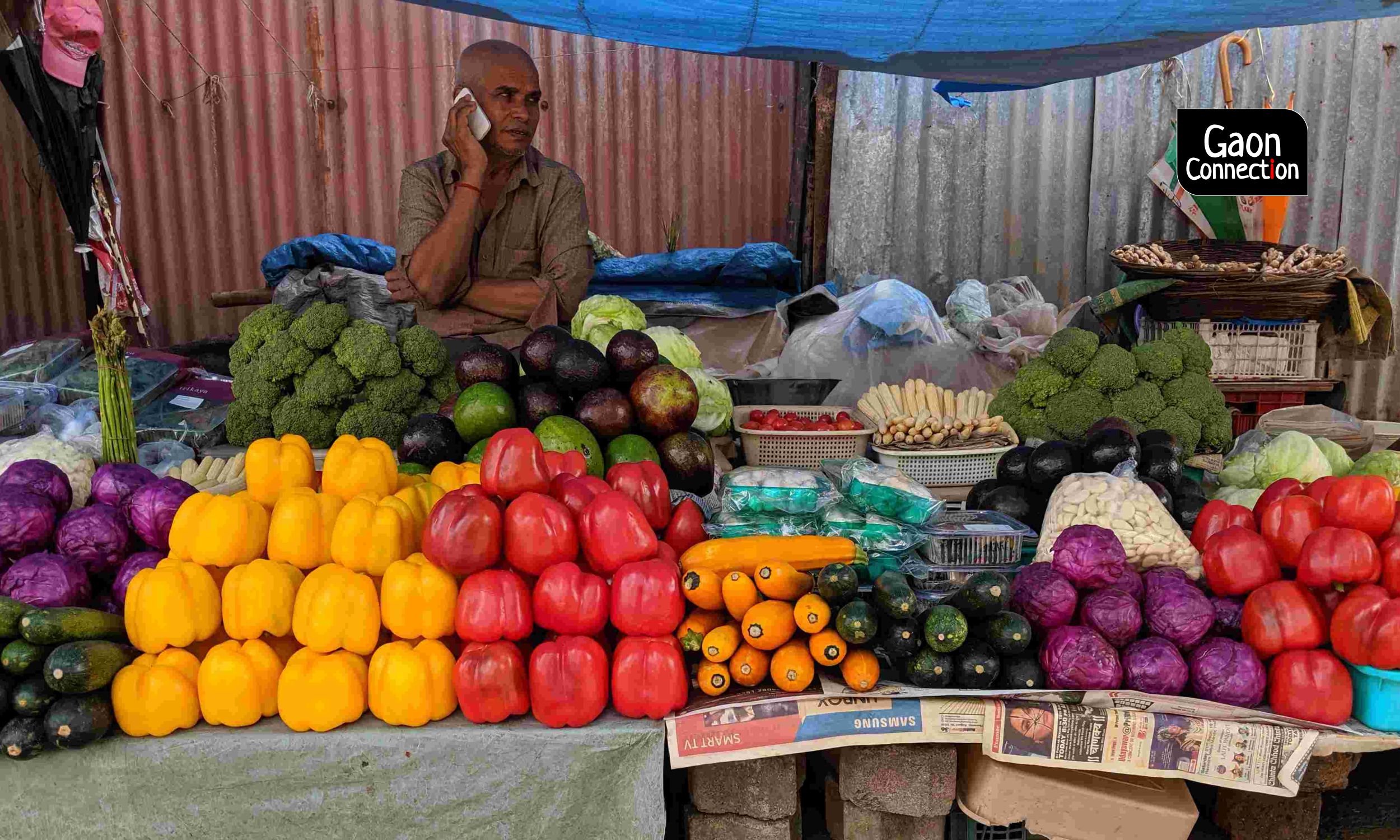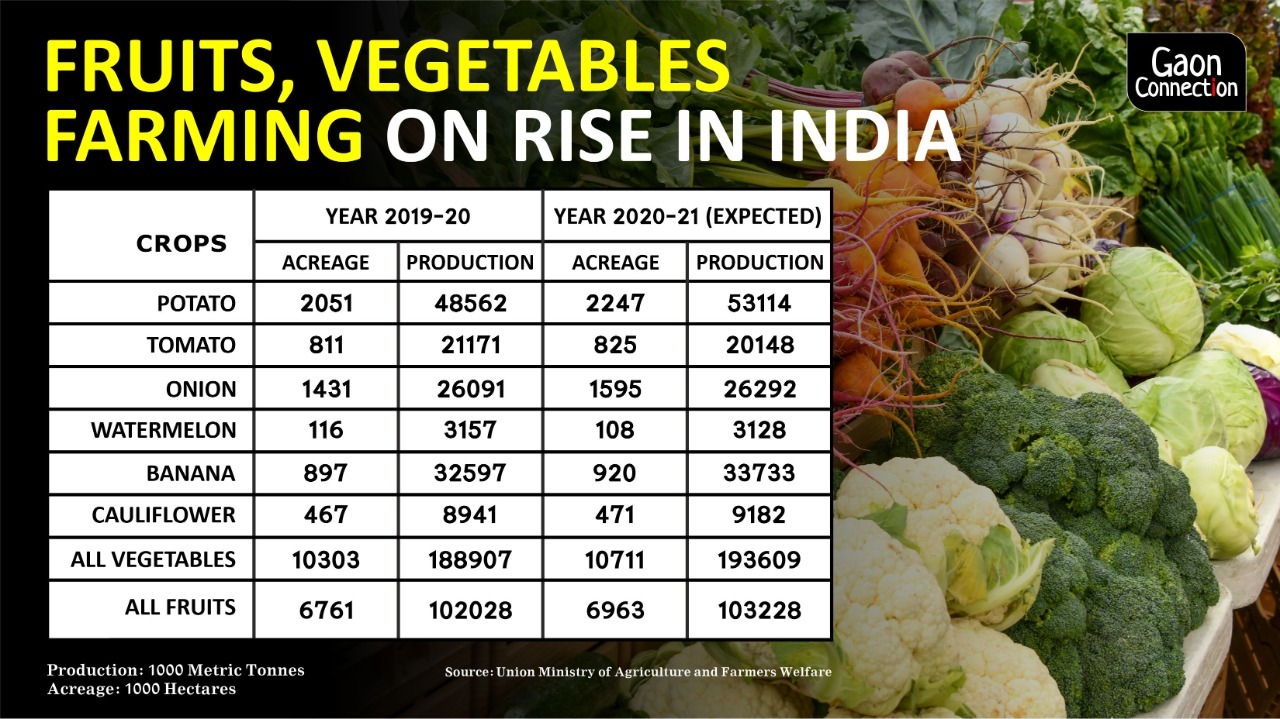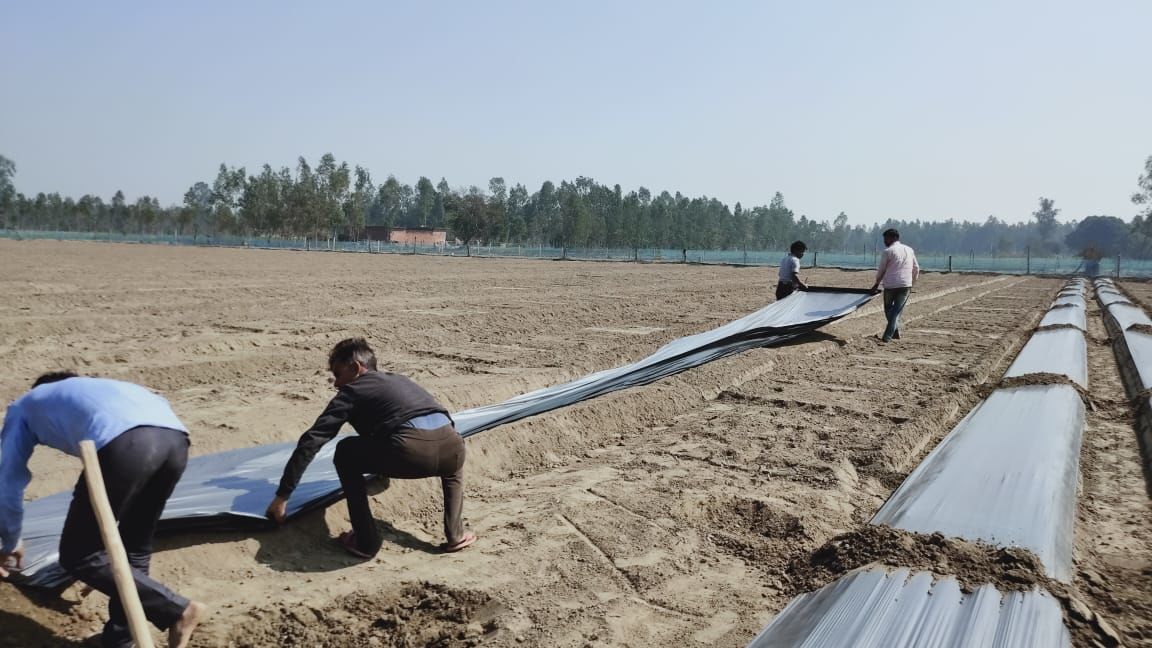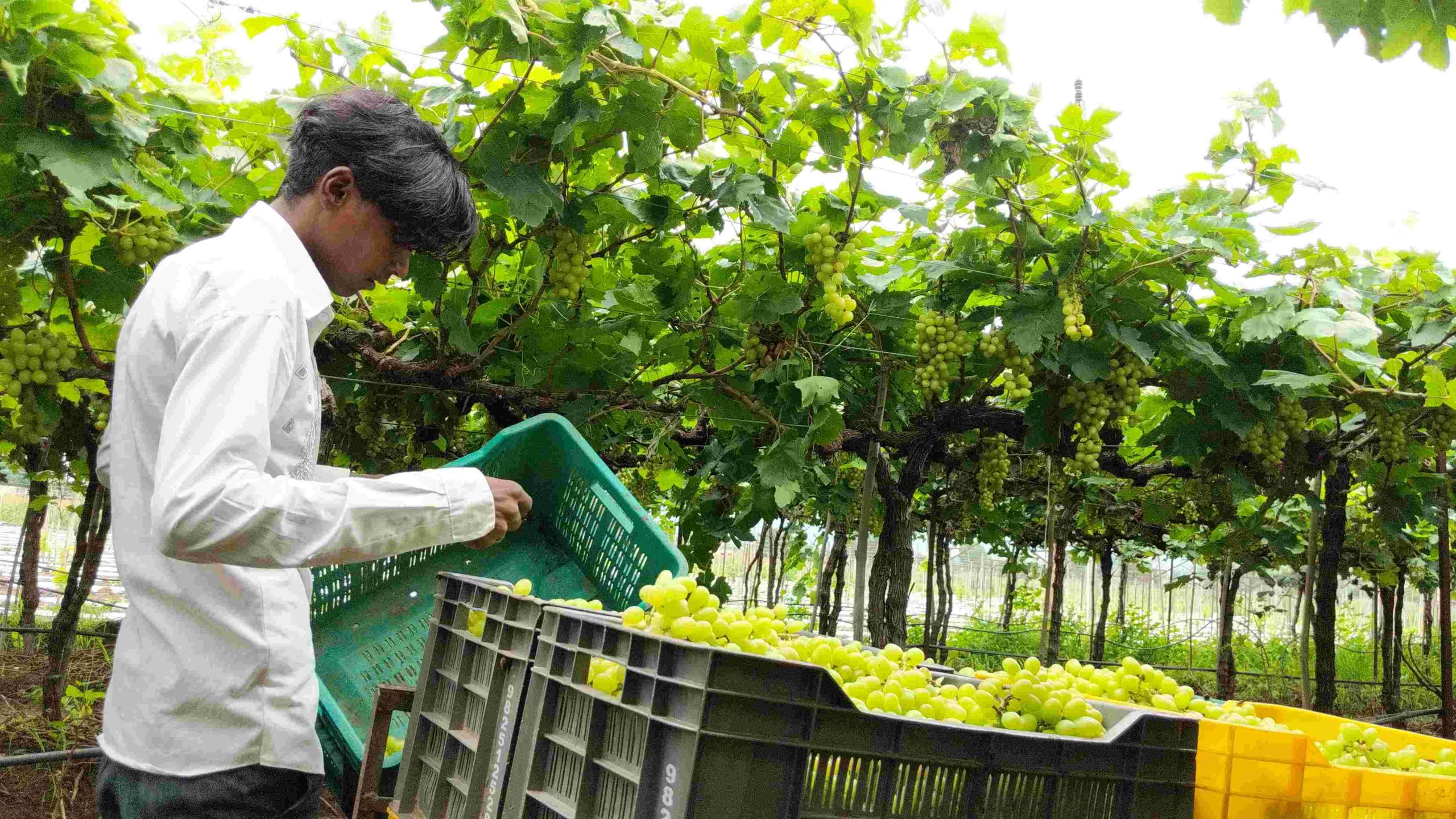Healthy Returns: Vegetable and fruit cultivation picks up momentum in India
The latest figures from the Union ministry of agriculture predicts an estimated yield of 326.58 million tonnes of vegetables and fruits in 2020-21 cultivated on 27.17 million hectares of land. Government subsidies, better returns and quick yields are encouraging farmers to cultivate fruits and vegetables.


Last month, Narendra Modi, the prime minister of the country, urged farmers to grow crops according to demand in the market and sell it to the world. Photo: Arvind Shukla
Shailendra Shukla, a 33-year-old farmer from Tandpur village in Barabanki district of Uttar Pradesh, who traditionally grew paddy, wheat and mint, has for the first time ventured into growing watermelon in 1.6 hectares of land. Several other farmers in his village are cultivating the fruit too.
“Last year my uncle planted watermelon in one acre (0.4 hectare) of land and despite the lockdown earned a tidy sum from it. So, I followed suit,” Shukla told Gaon Connection. “Whereas wheat takes four to five months, water melons do not take more than three months to get ready, after which the field is ready to take on another crop,” he added.
In Barabanki district alone, the acreage of watermelon has almost tripled as compared to the previous year. “Last year, the acreage of watermelon-melon and cucumbers was a hundred and fifty hectares. This year it has increased to more than five hundred hectares,” Mahendra Kumar, district horticulture officer of Barabanki told Gaon Connection. The acreage of fruits and vegetables is increasing steadily, he added.
According to the latest data (March 8) from the Union ministry of agriculture and farmers welfare, horticultural crops (fruits and vegetables) are estimated to yield a total 326.58 million tonnes in 2020-21. They are being cultivated over 27.17 million hectares. Of this, vegetables are growing on 10.71 million hectares with an estimated yield of 193.61 million tonnes. Fruit, that is being cultivated on 6.96 million hectares, is expected to yield 103.23 million tonnes. In 2019-20 the fruit yield was 102.03 million tonnes.

Last month, on February 1, prime minister Narendra Modi said in parliament, “I tell the farmers not to grow only paddy and wheat because it is not going to work. They should grow crops according to demand in the market and sell it to the world.” He gave examples of a farmer who was growing cherry tomatoes and broccoli in Haryana, and another who was doing strawberry-farming in Bundelkhand. The government would extend subsidies to farmers for cultivating such cash crops, he added.
Subsidies for horticulture
“Horticulture crops are being promoted in the country under the National Horticulture Mission,” Shailendra Singh, the deputy director at National Horticulture Board told Gaon Connection. This board works under the Union agriculture ministry to promote cultivation of fruits and vegetables in the country. To encourage their cultivation, the central government offers many subsidies.
Farmers who cultivate horticultural crops in the open are helped with subsidies up to 40 per cent, or up to a maximum of Rs 3 million. Those who grow the fruits and vegetables using ‘protective methods’ such as poly house or greenhouse cultivation, receive a subsidy of 50 per cent or a maximum amount of Rs 5.6 million. The government subsidies are more for the north-eastern and hilly states, Shailendra Singh added.

According to the Union agriculture ministry, 86 per cent of the farmers in the country are small and marginal farmers, who own less than two hectares of land. It was these farmers that the prime minister was referring to in his address when he urged them to move beyond paddy and wheat, and cultivate produce as per the market demand.
Twenty two crops besides onion, tomato and potato have been scheduled under the Operation Green Scheme to promote cultivation and processing of vegetables and to protect against post-harvest losses.
“Looking at the figures, it is clear that vegetable cultivation has increased more than fruits. The farmers should shift from single grain cropping (cultivation of one kind of cereals) to multi cropping of vegetables,” Shyam Sundar Singh, executive director of Dehat, told Gaon Connection. Dehat, an agri setup, provides support and counselling to farmers from seed to market access, and has been working on cultivation of vegetables in several states including Bihar, Jharkhand, Odisha, Chhattisgarh and Uttar Pradesh.
Fruit and vegetable cultivation and production
In 2019-20, 48.56 million tonnes of potato was produced in 2.05 million hectares. As per the first estimate of 2020-21, the potato production is expected to be 53.11 million tonnes from 2.25 million hectares.
Similarly, onion prices may be still very low but onion has retailed for as much as Rs 200 last year. During 2020-21, onion was cultivated in 1.6 million hectares and 26.29 million tonnes is estimated to be produced. Similarly, as against 0.46 million hectares in 2019-20, cauliflower acreage has been 0.47 million hectares in 2021 which is expected (first) to produce 91.82 million tonnes.

“Our FPO [farmer producer organisation] has about 500 local farmers, out of which about 100 farmers are cultivating mushrooms and vegetables,” Vivek Singh, farmer and director of Apna Gaon Bio-energy Farmer Producer in Ayodhya district of Uttar Pradesh, told Gaon Connection. “Many farmers in our district are cultivating watermelon, Thai guava, lemon and papaya because with only one-time investment, horticulture crops provide an assured income for the next eight to ten years,” he said.
Horticulture crops are cash crops and provide an yield in a shorter span. Though they also yield higher profits, there are some risks involved in cultivating them.
“Lack of proper knowledge and experience in cultivating vegetables often leads to losses,” said Sandeep Singh, from Kuchiwada, Seoni district of Madhya Pradesh, who cultivates green chillies in a little over 15 hectares and tomatoes in 13 hectares. He observed that 70 per cent of the farmers who ventured into fruit and vegetable cultivation, gave it up by the fourth year. “In this line (fruit and vegetable farming), only those farmers who are firmly established in the market, make profits,” he said.
Shyam Sundar Singh, of Dehat also agreed. “It is far more difficult to grow cucumber as compared to wheat. Besides good quality seeds, attention also has to be paid to proper and timely use of chemicals and fertilisers,” he said. “There is a lot of price fluctuation in this field,” he pointed out. He said a proper understanding of post-harvest technology was essential to make a success out of vegetable and fruit cultivation.

